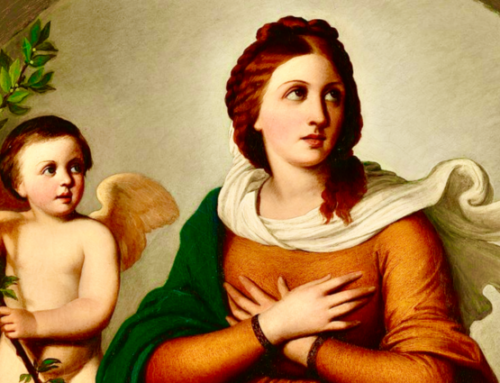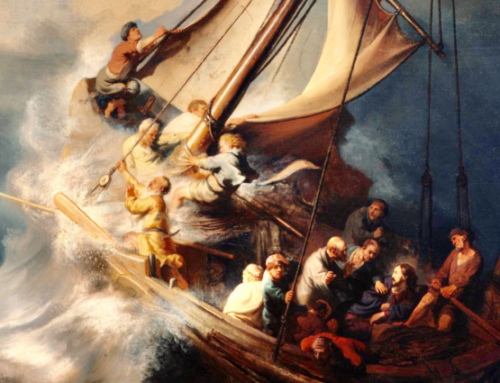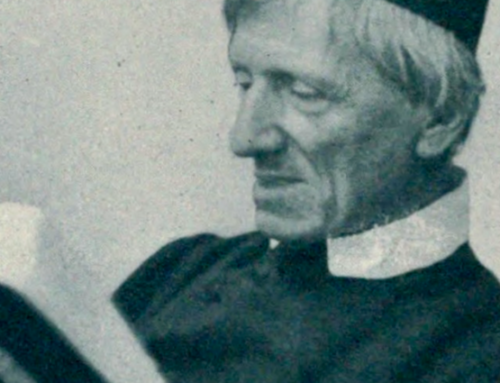Avellina Balestri’s “Saplings of Sherwood” has as its setting the area surrounding Sherwood Forest during the years when Robin Locksley and Maid Marian were children and later teenagers. This is a truly masterful piece of storytelling and as near to the real or legendary Robin Hood as any of us is likely to get.
 There are two ways of understanding history. We can see it as the past or as the record of the past. The two understandings are very different. The first sees history as the past, pure and simple; the latter sees it as that part of the past which has been documented. Since most of the past is not documented, it means that most of the past is a mystery. It can be likened to a jigsaw puzzle in which only a few pieces remain. It’s difficult to see the true picture of the past when so much of it is missing.
There are two ways of understanding history. We can see it as the past or as the record of the past. The two understandings are very different. The first sees history as the past, pure and simple; the latter sees it as that part of the past which has been documented. Since most of the past is not documented, it means that most of the past is a mystery. It can be likened to a jigsaw puzzle in which only a few pieces remain. It’s difficult to see the true picture of the past when so much of it is missing.
Considering the mysterious nature of the past, there are two ways of approaching it. We can approach it with humility, seeking to understand the missing pieces in the light of those existing pieces which seem to fit next to them, or else we can approach it with pride or ignorance, seeking to insert fabricated pieces which we have made in the light or shadow of our own time and its prejudices. The way of humility is to see the past, as far as possible, in the way that the past sees itself. We should read Dante in the light by which Dante sees, which is the light of Catholic doctrine and Christian realism; we should read Shakespeare in the light by which Shakespeare sees, which is essentially the same light by which Dante sees. Alternatively, we can impose our own twenty-first century prejudices upon the works of the past, re-making them in our own image, so that Shakespeare becomes a feminist or a chauvinist, a homosexual or a “homophobe”, a transexual or a “heterosexist”, a socialist or a fascist, a relativist or an atheist. Returning to our metaphor of the jigsaw puzzle, the latter way of seeing or reading the past is akin to making new “modern” pieces of the jigsaw puzzle so that we can make the picture of the past whatever our prejudices prescribe. This is not seeing history as the mystery which it is but as the work of fiction that we want it to be.
One example of the sort of pride which fictionalizes the past to serve the prejudices of our own deplorable epoch is the way in which the legend of Robin Hood has been mutilated. Since the 1980s, multicultural dogma has insisted that a Muslim be introduced as a key member of Robin Hood’s Merry Men, making the past “politically correct” in the eyes of the present through the inclusion of historical impossibilities. Meanwhile, the BBC’s production of Maid Marian and Her Merry Men reinvented Maid Marian as the macho hero, the antithesis of the feminine heroine, with Robin being reduced to an emasculated wimp always in need of being rescued by his “better half”. Such cynical and agenda-driven abuse of the past reduces the mystery of history to the level of political propaganda on behalf of contemporary ideologies.
It was in the light or shadow of such historical abuse that I plucked a new novel, Saplings of Sherwood, from those shelves in my library that contain contemporary fiction. Published last year, it is billed as Book One of a larger work, The Telling of the Beads. As the title suggests, Saplings of Sherwood has as its setting the area surrounding Sherwood Forest during the years when Robin Locksley and Maid Marian were children and later teenagers. This is the first thing that gripped me. This is a book in which children are the principal characters, but it’s not a children’s book. On the contrary. Some of the content is decidedly not suited for children. In most fiction written for adults, children are decidedly absent, as creatures not really belonging in the adult world. Similarly, in most children’s literature, adults are decidedly absent or at least only visible in the periphery of our vision, as though adults do not really belong in the world of the child. It is difficult to have the both worlds not merely presented in parallel but in an interwoven drama of intersecting and conflicting desires. Only the greatest writers can do this successfully. One thinks perhaps of Dickens. In this sense, the young author of this novel, Avellina Balestri, has the mark of a great author, or at least a great author in the making.
As I continued reading with a heightened degree of interest and avidity, I wondered why such a novel had been self-published. Why had Miss Balestri not secured a reputable publisher for this work of indubitable literary merit? As I read on, the reason became apparent. On the one hand, the real presence of Catholicism would have precluded its acceptance by any secular publisher in our political and ideologically-charged culture. On the other hand, Miss Balestri’s unflinching approach to sexual activity would preclude its being accepted by any Christian publisher, except the most adventurous, such as Wiseblood Books.
With regard to the presence of sexual practices, Miss Balestri shows an all too rare sensibility. She is certainly not prudish nor puritanical, nor is she even coy; yet neither does she succumb to the lascivious voyeurism which is all too common in contemporary fiction. We are not left at the cabin door in the manner in which Waugh leaves the reader in Brideshead Revisited when Charles and Julia cross the threshold into Julia’s cabin and into the commencement of their adulterous affair; nor are we invited into the room to become a fly-on-the-wall. Instead, Miss Balestri shows us rape, attempted rape, child abuse, marital relations, and adulterous relations, without ever losing control of the descriptive language necessary to keep such incidents from becoming either offensive or titillating. This is a rare gift indeed.
Most important is the historical realism which pervades the telling of the tale. Even allowing for the fact that Sherwood Forest is a place of mystery, shrouded with mythic mist and haunted by the shades of the legendary spirits which walk in its shadows, the backdrop of twelfth-century England is alive with historical verity. Miss Balestri has done her homework. The tension between the Saxon population and their Norman overlords is shown as it must have been at the time. The daily lives of the protagonists seem to reflect what we know or imagine we know about the daily lives of people in medieval England. There is no gatecrashing of the past with anomalous and absurd characters from the present day, parachuted in to deliver the moral agenda of the nihilistic zeitgeist. There are no radical feminists or militant atheists. Instead, there are sinners innumerable and noble souls who try to live virtuously in spite of temptations to pride, hatred, anger, violence, and lust. They are not saints themselves, but they revere the saints enough to want to become more like them. They are, therefore, whether they know it or not, saints in the making. Such are Robin Locksley and Maid Marian.
It is perilous to offer the final word on any work of literature until the final word is written. I have no idea whether Miss Balestri has yet even written the final word. As such, I have no idea whether Book Two of The Telling of the Beads will be as good as this first book or, for that matter, whether there will be a Book Three or a Book Four. I do know, however, that I have just finished a truly masterful piece of storytelling. It is not without flaws, which I will desist from listing, but they are remarkably few in number. Above all, it is historical fiction which offers a true reflection of what is known of the historical facts. Although the story moves in the mysterious spaces in which the historical pieces are missing, it does so in a way that fits comfortably beside the historical pieces that are present in the documentary records.
We don’t know much about the real Robin Locksley who would become the legendary Robin Hood. We don’t even know if he ever existed in anything but imaginative legend. But we do know the sort of world in which he lived, or would have lived, because we have the documented evidence, the pieces of the puzzle which have not been lost forever among the shades and shadows of Sherwood. If Robin Hood ever walked the forest in flesh and blood and not merely in romanticized spirit, he would have walked in the sort of world which Miss Balestri paints for us. This is as near to the real or legendary Robin Hood as any of us is likely to get. For this alone, we owe a debt of gratitude to Miss Balestri.
The Imaginative Conservative applies the principle of appreciation to the discussion of culture and politics—we approach dialogue with magnanimity rather than with mere civility. Will you help us remain a refreshing oasis in the increasingly contentious arena of modern discourse? Please consider donating now.
The featured image is “Sherwood Forest” (circa 1900) by Willis Richard Edwin Hudson, and is in the public domain, courtesy of Wikimedia Commons.








I greatly appreciate The Imaginative Conservative for introduction to both new and established books to add to my reading list.
This was a great review encouraging one to seek out Saplings of Sherwood. I share Mr. Pearce’s disdain for those trying to edit or alter established stories or histories outside of their social, religious, and historical context.
Hi, Michael! Thanks for reading this wonderful review of my book 🙂 Mr. Pearce has done me quite the honor!
And yes, I fully agree with you and him that their is nothing more frustrating than taking traditional stories and superimposing modern modes of being onto the past or indeed trying to make universal themes secondary to current social trends.
If you get around to reading “Saplings of Sherwood”, I would love your thoughts on it as well on Amazon and Goodreads! Those types of reviews really help in terms of getting the word out about the book 🙂
Thank you so much, Mr. Pearce, for being so kind as to take time out of your busy schedule to not only read the novel but also write this lovely review. I have gotten a rush of over thirty sales thanks to you!
I cannot agree with you more about the way in which history can be so grievously mishandled in popular literature and media. Often times it turns into little modern morality plays, where the chosen era is chastised in order to make ourselves feel better for being so “enlightened.” This undermines the universal principles that make stories worth telling and creates a lack of empathy and sympathy and relatability with the characters in their own contexts. I think the constant thread of history is really a divine love story, so regardless of what elements of our lived reality have changed, that constant pursuit of the Hound of Heaven has remained the same.
Approaching the Robin Hood legends, my intent has always been to ground it in a sort of Christian realism which deals with the gritty realities of history without sinking into the sort of grimdark grayness of George RR Martin and adding more overt joy and palpable grace than the more gothic style of Flannery O’Connor. For example, every time I include something dark and disturbing, I made a point to balance it off which some act of goodness so that readers would not come away with the impression this world is simply “nasty, brutish, and short.,” as the stereotype makes out the Middle Ages to be. Also, I have loved the merriment of the legends dearly throughout my life, and while making it more mature and historically grounded, I also wanted to show that merriment in my series.
I’m so very glad you liked my mixing of child and adult perspectives! Some readers actually sited it as a problem, and thought there was tonal whiplash. But your comments have given me knew confidence in the method I used. I agree with you that too often children’s books banish adults to the periphery and adult books don’t really treat children as full characters. Also for record, in terms of age range goals, I am aiming the series at readers who are age 15+. So mid-teens and up, essentially.
I admit I having a soft spot for “Maid Marian’s Merry Men” lol. A Londoner friend of mine introduced me to it, having grown up on them herself, and I binge watched it when I was sick. It cheered me up with its sheer farcical charm, and I particularly enjoyed the sheriff of Nottingham and his useless sidekick guards. But of course, it is a kid’s spoof, and therefore I don’t judge it nearly as harshly as productions actually taking themselves seriously.
As far as Muslim inclusions in Robin Hood retellings, unfortunately it tends to be executed pretty poorly, just for the sake of a diversity pitch without proper planning. There’s going to be a Muslim character in mine, but based off of a real person, one of Salahuddin’s aides. In my version, he’s captured and brought back to England as a mercenary. He starts off as Robin’s opponent, in the service of the main villain trying to capture him, but eventually a series of circumstances turn the tables. That having been said, he’s very much his own character and does not see himself as a band member. I’m indebted to my Muslim friends and cultural advisors for coming on board and helping me make the character, well, NOT Azeem in Prince of Thieves lol. But all that is to come lol.
So in terms of story length, it’s currently planned to be a six book series. I’ve written bits of each book so far, out of order, so it’s a matter of organizing it all and filling out the missing sections. I have around half of book 2 finished in a rough format, so just in the process of editing the finished chapters before writing more. I hope you will like the sequel, as it’s when the characters we meet in book 1 finally fall into their traditional legendary roles, and the action really starts to pick up pace.
As far as publishing options go, it actually had less to do with either the mature content or Catholic themes; the publishers who I showed excerpts too tended to want more “action” lol. They said it was too slow paced and they wouldn’t know how to pitch it. Also little Robin bored them lol. My idea has always been to mirror it off of classic literature, which does tend to be more slow-burn, and leave more space for narration, and I realized that ripping it apart to please them was not something I was willing to do to the product. Plus, little Robin is my baby lol. So I liked it, and I kept it. On the positive side, self-publishing allows a certain freedom of movement that is non-existent in traditional publishing. You have complete control over your work, and you ultimately make more money per sale. So I’m pretty satisfied with the arrangement. All I need is a few hundred more friends like you to let the world know the book exists, and I’m good haha!
Once again, thank you so much for your generosity and encouragement! I’m so pleased you enjoyed the book, and hope you will enjoy the others I produce as well! I’m actually working on a new trilogy too, which deals with Catholic recusants in 18th century England and crosses over into the American Revolution. I’d love your thoughts on that when I finally get the first part finished 🙂
Avellina does it again with her awesome imagery and storytelling!
Thank you so much, Ray! 🙂
Thanks for sharing such a great story
Your most welcome! Here’s hoping I can grind out the sequel sooner than later, and not go down the dark road of GRR Martin haha
I just read Robin Hood. In fact, I read two different versions. I found the review very timely and the author’s comments so interesting as well. Thanks!
Oh, cool! What two versions did you just read, and what did you think of them? I’ve read/watched so many at this point, in order to sort of sink myself in the ethos, they tend to blur together a bit lol. Anyway, if you get around to reading “Saplings of Sherwood”, I’d love your review on Amazon/Goodreads! 🙂